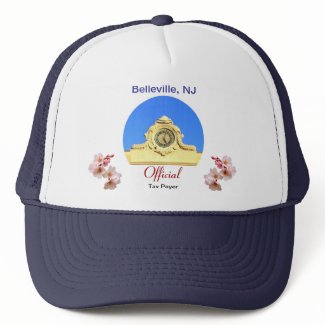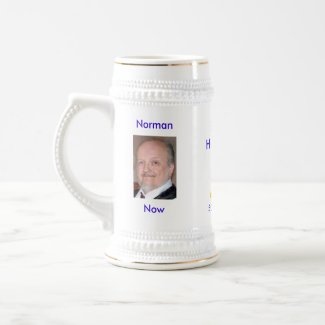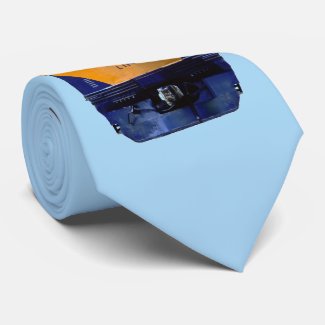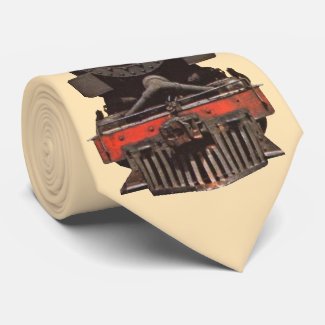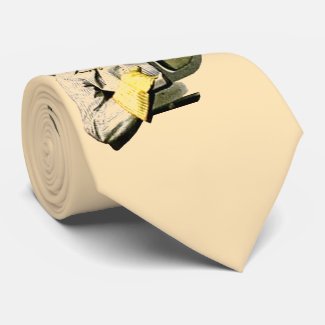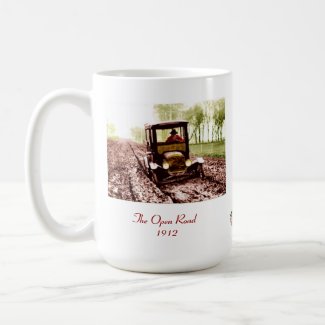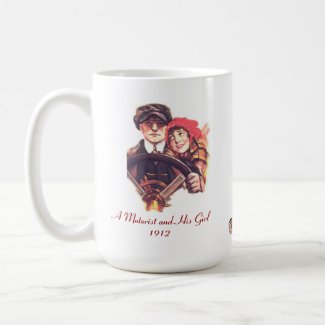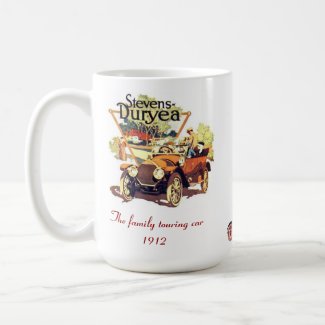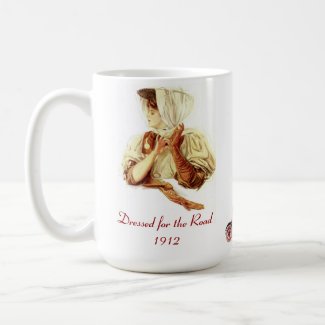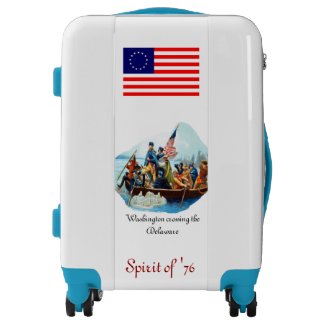Belleville's First Telephone
 Style of the first telephones used in Belleville.
Style of the first telephones used in Belleville.-
As we continue to experience the year 2009, such as it is, let us pause for a moment in our various deliberations and acknowledge this year as the 130th anniversary of the first telephone here in Belleville. We were not slow to join in the technology revolution of the 1870's and 1880's.
Alexander Graham Bell patented the first telephone in 1876 (a topic of considerable debate. Today's history students may want to research Antonio Meucci and come to their own conclusions). Bell exhibited his device at the Philadelphia Centennial Exhibition of 1876 where the remarkable instrument generated such a level of interest and excitement that the Bell Telephone Co. was formed to answer the demand on the 9th of July in 1877. We have been paying telephone bills ever since. The appetite for this marvelous device was voracious. Ever so quickly, wires spread across the land, faster than a spider can weave its web. In 1878 an exchange was established in the Kinney Building at Broad and Market Streets in Newark and by early 1879, Belleville had its first telephone. This urgency to talk is all the more remarkable when one considers the priorities. Street lighting on Main Street came five years later in 1884 and public sewers around 1912; everything according to greatest need . . . well, sort of.
This first telephone, actually a pair of telephones, were installed for the Aqueduct Board, one located at the reservoir, the other at the pump house. Soon after, in the early 1880's the first public pay station was installed at the Belleville train station and then another at Osborne's Drug Store on Main Street, where Mr. Osborne, or one of his clerks, would collect the charges for each call made. The Osborne pay station became such an important communication center in town that it was necessary to hire a manager to operate it. That task went to old-time resident William Dow Holmes, former Post Master, better known to town folks as Deacon Holmes. Mr. Holmes would collect the calling charges and would answer incoming calls. If the call was urgent, he would send out a runner who would locate the person called and summon them to the phone. For less important calls, Mr. Holmes would write down the message, put it in an envelope and send out a boy to deliver it, not so very different from a telegram message.
Osborne's Drug Store was located in the "center" of Belleville's business district. At least it was the center as folks saw things back then. Using today's landmarks to find where it was, you would start in front of the old Dutch church and proceed about ten car lengths south. It was on the river side of Main Street in a large building that housed several other stores including Sanford's butcher shop, Townsend and DePuy's grocery store, Snow's candy store, Sussman's barber shop and the Post Office. The upper rooms of the building were used as Town Hall and as a Sunday School. The photos below, courtesy of the Belleville Public Library and Information Center archives, depict the store front and then the building as it appeared during the great flood of 1902. There is also a view of the building from the river.
By the turn of the century, there were 26 telephone subscribers in town. In 1900, a switchboard was installed in Osborne's Drug Store. By 1901 there were 34 residents with telephones and by 1902 there were 46.
The familiar "Number, Please", that we old-timers from the 1950's pre dial-up era remember so well when we picked up the receiver, was not yet in use. [ If you ever had a telephone number starting with BE-2, then you can count yourself as an old-timer.] To use these early phones, you would pick up the ear piece, turn a crank on the side of the wall box to "ring" the operator, then, leaning forward to speak into the mouth piece, tell the operator the name and / or address of the party you were calling. There were no telephone numbers yet. The operator would look for the party in a directory, ring the party and, if they answered, plug you in. Amusingly, the farther away the party was, the louder a person spoke. No, it wasn't necessary to speak louder, it just seemed like the right thing to do to many folks when the party being called was in another town. It took a while for folks to understand that you didn't have to shout to be heard in Nutley.
If you remember having one of those BE-2 numbers, unless you were quite well-to-do and paid for a "private" line, you most likely had a party line with a letter attached to your phone number. Your number might have been, for example, BE-2-1234J. The "J" was your party extension meaning you were one of 10 households using that same line. It would not be unusual for you to pick up your phone and, instead of hearing that terse "Number, please", you would hear one of your neighbors gossiping about who knows what. Most people were polite about it and would more-or-less quietly hang-up although there might be an occasional hostile outburst - "Would you please get off the line, you've been blabbering for twenty minutes now !" Privacy on party lines was non-existent but your phone bill was around $2 a month, affordable to most folks, so you put up with the inconvenience. How lucky we are today, although our phone bill isn't $2 anymore.
You can help commemorate this 130th year of the first telephone in Belleville if, next time you pluck your cell phone out from your pocket to answer a call, pause for just a second and reflect on how nice it is that you don't have to run down to Osborne's Drug Store to take your call.
 Osborne's store front
Osborne's store front
As we continue to experience the year 2009, such as it is, let us pause for a moment in our various deliberations and acknowledge this year as the 130th anniversary of the first telephone here in Belleville. We were not slow to join in the technology revolution of the 1870's and 1880's.
Alexander Graham Bell patented the first telephone in 1876 (a topic of considerable debate. Today's history students may want to research Antonio Meucci and come to their own conclusions). Bell exhibited his device at the Philadelphia Centennial Exhibition of 1876 where the remarkable instrument generated such a level of interest and excitement that the Bell Telephone Co. was formed to answer the demand on the 9th of July in 1877. We have been paying telephone bills ever since. The appetite for this marvelous device was voracious. Ever so quickly, wires spread across the land, faster than a spider can weave its web. In 1878 an exchange was established in the Kinney Building at Broad and Market Streets in Newark and by early 1879, Belleville had its first telephone. This urgency to talk is all the more remarkable when one considers the priorities. Street lighting on Main Street came five years later in 1884 and public sewers around 1912; everything according to greatest need . . . well, sort of.
This first telephone, actually a pair of telephones, were installed for the Aqueduct Board, one located at the reservoir, the other at the pump house. Soon after, in the early 1880's the first public pay station was installed at the Belleville train station and then another at Osborne's Drug Store on Main Street, where Mr. Osborne, or one of his clerks, would collect the charges for each call made. The Osborne pay station became such an important communication center in town that it was necessary to hire a manager to operate it. That task went to old-time resident William Dow Holmes, former Post Master, better known to town folks as Deacon Holmes. Mr. Holmes would collect the calling charges and would answer incoming calls. If the call was urgent, he would send out a runner who would locate the person called and summon them to the phone. For less important calls, Mr. Holmes would write down the message, put it in an envelope and send out a boy to deliver it, not so very different from a telegram message.
Osborne's Drug Store was located in the "center" of Belleville's business district. At least it was the center as folks saw things back then. Using today's landmarks to find where it was, you would start in front of the old Dutch church and proceed about ten car lengths south. It was on the river side of Main Street in a large building that housed several other stores including Sanford's butcher shop, Townsend and DePuy's grocery store, Snow's candy store, Sussman's barber shop and the Post Office. The upper rooms of the building were used as Town Hall and as a Sunday School. The photos below, courtesy of the Belleville Public Library and Information Center archives, depict the store front and then the building as it appeared during the great flood of 1902. There is also a view of the building from the river.
By the turn of the century, there were 26 telephone subscribers in town. In 1900, a switchboard was installed in Osborne's Drug Store. By 1901 there were 34 residents with telephones and by 1902 there were 46.
The familiar "Number, Please", that we old-timers from the 1950's pre dial-up era remember so well when we picked up the receiver, was not yet in use. [ If you ever had a telephone number starting with BE-2, then you can count yourself as an old-timer.] To use these early phones, you would pick up the ear piece, turn a crank on the side of the wall box to "ring" the operator, then, leaning forward to speak into the mouth piece, tell the operator the name and / or address of the party you were calling. There were no telephone numbers yet. The operator would look for the party in a directory, ring the party and, if they answered, plug you in. Amusingly, the farther away the party was, the louder a person spoke. No, it wasn't necessary to speak louder, it just seemed like the right thing to do to many folks when the party being called was in another town. It took a while for folks to understand that you didn't have to shout to be heard in Nutley.
If you remember having one of those BE-2 numbers, unless you were quite well-to-do and paid for a "private" line, you most likely had a party line with a letter attached to your phone number. Your number might have been, for example, BE-2-1234J. The "J" was your party extension meaning you were one of 10 households using that same line. It would not be unusual for you to pick up your phone and, instead of hearing that terse "Number, please", you would hear one of your neighbors gossiping about who knows what. Most people were polite about it and would more-or-less quietly hang-up although there might be an occasional hostile outburst - "Would you please get off the line, you've been blabbering for twenty minutes now !" Privacy on party lines was non-existent but your phone bill was around $2 a month, affordable to most folks, so you put up with the inconvenience. How lucky we are today, although our phone bill isn't $2 anymore.
You can help commemorate this 130th year of the first telephone in Belleville if, next time you pluck your cell phone out from your pocket to answer a call, pause for just a second and reflect on how nice it is that you don't have to run down to Osborne's Drug Store to take your call.
 Osborne's store front
Osborne's store front Taken during the flood of 1902, Osborne's is on the left.
Taken during the flood of 1902, Osborne's is on the left. Taken during the flood of 1902. Note the telephone lines.
Taken during the flood of 1902. Note the telephone lines.
View from the Passaic River, the back of Osborne's is on the right.








